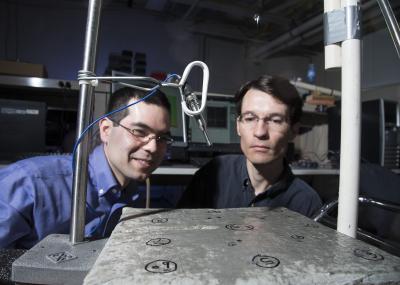HOUSTON -- (Oct. 23, 2012) -- A new Rice University-led study finds that a deep connection about 50 miles underground can explain the enigmatic behavior of two of Earth's most notable volcanoes, Hawaii's Mauna Loa and Kilauea. The study, the first to model paired volcano interactions, explains how a link in Earth's upper mantle could account for Kilauea and Mauna Loa's competition for the same deep magma supply and their simultaneous "inflation," or bulging upward, during the past decade.
The study appears in the November issue of Nature Geoscience.
